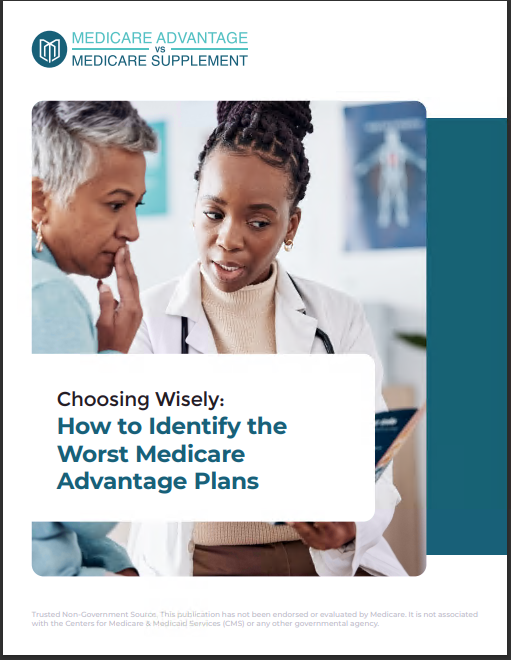Key Takeaways
- Medigap plans help reduce the unpredictability of healthcare costs by covering expenses Medicare doesn’t, like copayments, coinsurance, and deductibles.
- Choosing a Medigap plan can provide peace of mind and financial stability, especially when dealing with unexpected medical bills.
Understanding Medigap: Your Safety Net in Healthcare
When you enroll in Original Medicare (Parts A and B), you gain access to a robust health insurance program. However, it doesn’t cover everything, leaving you with out-of-pocket costs that can quickly add up. This is where Medigap, also known as Medicare Supplement Insurance, steps in as a lifeline to help manage these expenses.
Medigap is designed to fill the “gaps” in Medicare coverage by helping with costs like deductibles, copayments, and coinsurance. These plans can make a world of difference when navigating healthcare expenses.
The Unpredictability of Healthcare Costs
Healthcare costs in retirement can be a rollercoaster. With Original Medicare, you’re responsible for:
- Part A Deductibles: In 2024, this is $1,632 per benefit period for hospital stays.
- Part B Coinsurance: Typically, this is 20% of the Medicare-approved amount for services.
- Other Out-of-Pocket Costs: These may include excess charges or foreign travel emergencies.
Without additional coverage, you might find yourself facing substantial medical bills. Medigap ensures you’re not left scrambling to cover these costs, offering predictable expenses and financial stability.
Who Can Benefit from Medigap Plans?
If you have Original Medicare and are concerned about the gaps in its coverage, Medigap may be for you. Here’s who benefits the most:
- Retirees on Fixed Incomes: Fixed monthly premiums for Medigap can make budgeting easier.
- Frequent Travelers: Some plans include foreign travel emergency coverage, offering peace of mind during trips abroad.
- Individuals with Chronic Conditions: Medigap can reduce the financial burden of ongoing care.
However, not everyone qualifies. To purchase a Medigap plan, you must already be enrolled in Medicare Parts A and B. Additionally, Medigap policies are sold individually, meaning spouses need separate plans.
Your Medigap Enrollment Window: Don’t Miss It!
Timing is everything when it comes to Medigap. The best time to enroll is during your Medigap Open Enrollment Period, which begins the month you turn 65 and are enrolled in Part B. This six-month period guarantees you:
- Access to any Medigap policy available in your area.
- Enrollment without health underwriting, meaning pre-existing conditions won’t affect eligibility or costs.
If you miss this window, you could face higher premiums or be denied coverage based on your health history.
How Medigap Works with Medicare
Medigap policies work alongside Original Medicare to cover out-of-pocket costs. Here’s how the two programs complement each other:
- Medicare Pays First: Medicare Parts A and B cover their share of approved healthcare costs.
- Medigap Pays Second: Medigap picks up the tab for covered expenses like coinsurance and deductibles.
This seamless coordination allows you to focus on your health instead of worrying about unexpected bills.
Choosing the Right Medigap Plan for You
There are 10 standardized Medigap plans, identified by letters (A, B, C, D, F, G, K, L, M, and N). Each plan offers different levels of coverage, but all are regulated to ensure consistency across providers.
Popular Options
- Plan G: Comprehensive coverage for most gaps, except the Part B deductible.
- Plan N: Lower premiums with some cost-sharing, like copayments for doctor visits.
Factors to Consider
When selecting a plan, think about:
- Your Healthcare Needs: Do you visit the doctor frequently or require specialized care?
- Your Budget: Higher coverage often comes with higher premiums, but it reduces out-of-pocket costs.
- Travel Preferences: If you travel abroad, consider a plan that covers foreign emergencies.
What Medigap Doesn’t Cover
While Medigap plans provide extensive coverage, they don’t cover everything. Here’s what you’ll still be responsible for:
- Prescription Drugs: You’ll need a separate Medicare Part D plan for this.
- Long-Term Care: Services like nursing homes or assisted living aren’t covered.
- Routine Vision and Dental Care: You may need to purchase additional insurance for these services.
Understanding these exclusions helps you plan for any additional coverage you might need.
The Cost of Medigap Plans
Medigap policies come with monthly premiums, which are separate from your Medicare Part B premium. These premiums vary based on factors like:
- Location: Costs can differ widely depending on your state.
- Age: Some plans base premiums on your age at enrollment.
- Health: Enrolling during your Open Enrollment Period can help you avoid higher costs due to health conditions.
While Medigap plans involve an upfront cost, they often save you money in the long run by reducing your out-of-pocket expenses.
The Long-Term Benefits of Medigap
Medigap isn’t just about managing immediate costs—it’s an investment in your financial future. Here’s how it benefits you over time:
- Budget Predictability: Fixed monthly premiums help you plan your expenses.
- Peace of Mind: Knowing that unexpected medical bills are covered reduces stress.
- Access to Care: With fewer financial barriers, you can prioritize your health and well-being.
Is Medigap Right for You?
Deciding if Medigap is right for you depends on your personal situation. Ask yourself:
- Can I afford the out-of-pocket costs with Original Medicare alone?
- Do I value the predictability of fixed premiums over variable expenses?
- Am I eligible for Medigap during the Open Enrollment Period?
If you answered yes to these questions, Medigap could be a valuable addition to your healthcare coverage.
Key Considerations for Your Medigap Journey
Before purchasing a Medigap policy, keep these tips in mind:
- Research Your Options: Each state may offer different plans and pricing.
- Compare Costs and Coverage: Make sure the plan you choose aligns with your healthcare needs and budget.
- Review Plan Ratings: Customer reviews and ratings can provide insight into plan performance and customer satisfaction.
Making Healthcare Costs Predictable and Manageable
Navigating healthcare costs in retirement doesn’t have to be overwhelming. Medigap plans offer a crucial layer of financial protection, ensuring you can focus on what matters most—your health. By reducing out-of-pocket expenses and providing predictable costs, Medigap becomes a lifeline for anyone seeking stability in their healthcare coverage.









